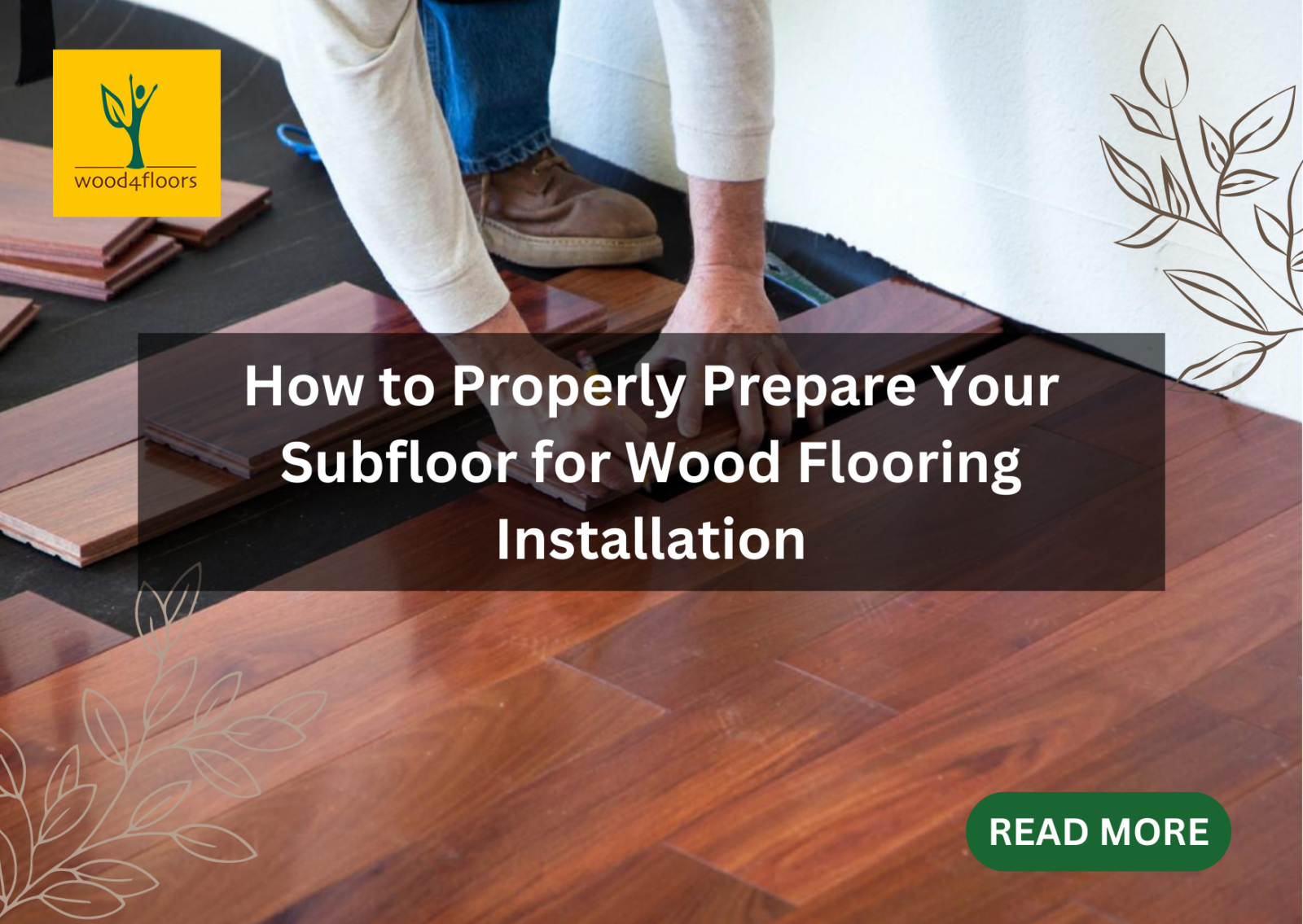Before you embark on the journey of installing beautiful wood flooring, it’s crucial to ensure that the foundation – your subfloor – is well-prepared. Proper subfloor preparation lays the groundwork for a smooth and durable wood flooring installation. In this guide, we’ll walk you through the essential steps to get your subfloor ready for the transformation.
Step 1: Assess and Clean the Subfloor
Start by thoroughly examining the subfloor for any signs of damage, unevenness, or moisture issues. Repair any loose boards or cracks, and remove debris, adhesive residue, or any protruding nails. A clean and level subfloor is essential for the successful installation of your wood flooring.
Step 2: Check for Moisture
Moisture can wreak havoc on wood flooring, leading to warping and other issues. Use a moisture meter to assess the moisture content of the subfloor. If it exceeds the recommended levels, address the moisture issue before proceeding with installation. You might need to use a moisture barrier or address any drainage concerns.
Step 3: Ensure Subfloor Stability
A stable subfloor is vital for preventing squeaks and maintaining the integrity of your wood flooring. If you find any loose or uneven sections, secure them properly. Plywood is often used to reinforce subfloors that require additional stability. Make sure your subfloor is rigid and doesn’t flex underfoot.
Step 4: Level the Subfloor
An uneven subfloor can lead to problems during and after installation. Use a leveling compound to fill in any low spots and create a smooth surface. Sand down any high points to achieve a consistent level. Remember, a flat subfloor is crucial for preventing gaps and uneven wear on your wood flooring.
Step 5: Acclimate the Wood Flooring
Before installation, allow the wood flooring to acclimate to the environment by leaving it in the installation area for a recommended period. This helps the wood adjust to the temperature and humidity conditions of the room, reducing the risk of post-installation issues.
Step 6: Install a Moisture Barrier
In areas prone to moisture, consider installing a moisture barrier between the subfloor and wood flooring. This barrier helps protect your wood flooring from potential moisture seepage, ensuring its longevity.
Step 7: Consult Manufacturer Guidelines
Different wood flooring products may have specific installation requirements. Consult the manufacturer’s guidelines for information on recommended adhesives, installation methods, and subfloor preparation techniques that align with your chosen wood flooring.
Step 8: Seek Professional Help if Needed
Subfloor preparation can be intricate, and if you’re unsure about any step, seeking professional assistance is a smart move. Experienced installers can evaluate your subfloor’s condition and perform necessary steps to ensure a flawless installation.
In Conclusion
Properly preparing your subfloor for wood flooring installation is a foundational step that directly impacts the final result. Taking the time to assess, clean, level, and address any moisture issues will create a stable base for your wood flooring to shine. By following these steps and manufacturer recommendations, you’ll be on your way to enjoying beautiful, long-lasting wood flooring that elevates the aesthetics of your space.


